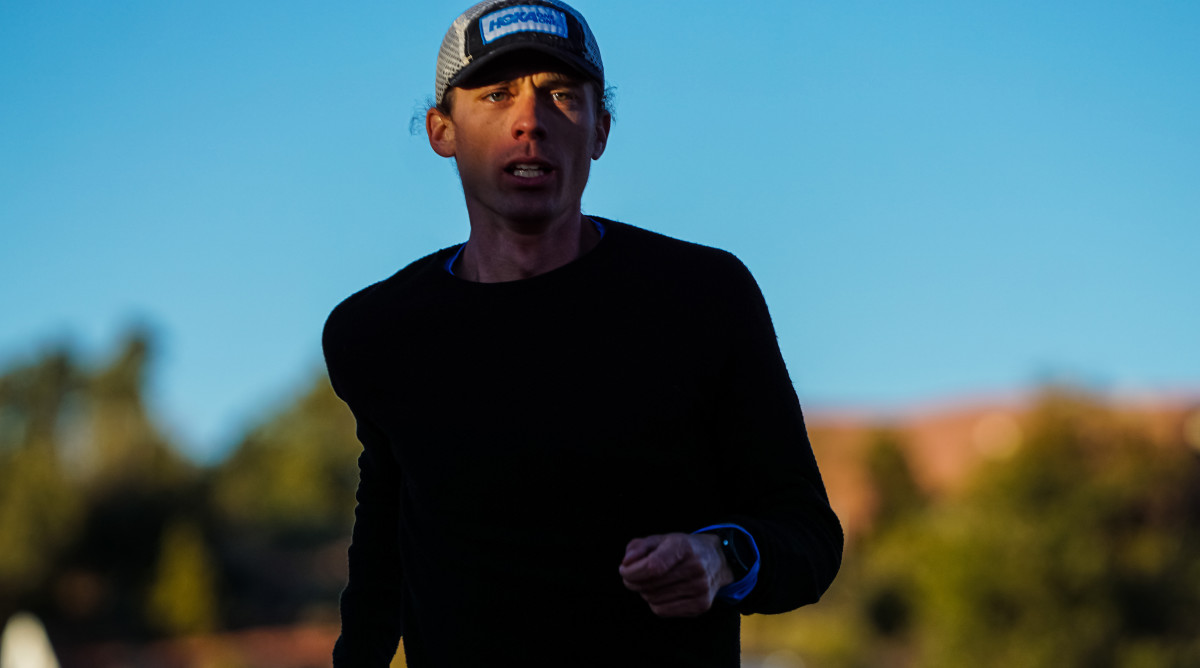Fridge Raider: Inside the Diet of Ultra-Marathoner Jim Walmsley

For the casual athlete, venturing out on a routine run usually doesn’t require constant fuel. Perhaps you eat a hearty breakfast or grab a granola bar before pounding the pavement, but most of us aren’t calculating our consumption by the minute. But that’s because most of us aren’t ultrarunners like Jim Walmsley, who logs thousands of miles per year through daily feats of extreme endurance.
The sport of ultrarunning is reserved for athletes who are dedicated to long-distance running that goes far beyond the 26.2-mile marathon distance, and fueling is absolutely crucial to an athlete’s performance and race strategy. Walmsley is arguably America’s best ultramarathoner at the moment and during his runs, he tries to consume close to 300 to 400 calories per hour, mainly through sports drinks and energy gels he sips and slurps along the way.
The 30-year-old from Arizona owns the course record at the Western States 100-Mile Endurance Run—the Super Bowl of endurance running and the oldest 100-mile race in the U.S.—which he set for the second consecutive year. Walmsley has also covered the 100-mile distance from Auburn to Squaw Valley in 14 hours and nine minutes.

Recognized on SI's 2020 Fittest 50 list as one of the world's best-conditioned athletes, Walmsley’s accomplishments are widely-known throughout the sports and running communities, but not many are aware that he follows a vegetarian diet.
“My diet wouldn’t really work for everybody,” Walmsley says. “I don’t talk about being a vegetarian too much because I’m not sure if it’s for everyone. I’m comfortable with it and it works for me.”
At the later checkpoints and aid stations of a race like the Western States Endurance Run, some runners will sit and eat sandwiches and drink soda and pocket crackers or gels to bring with them as they continue in the race. Every runner has a different strategy.
So what does Walmsley really eat? As he prepares to make his marathon debut at the 2020 U.S. Olympic Marathon Trials in Atlanta on Feb. 29, Walmsley shared some of his dietary habits and tricks for going the (ultra) distance.
Pizza and Beer—Always
We’re not talking about a once-a-month “cheat meal” or a Friday night meal with friends—Walmsley says that pizza, with an icy-cold beer, is nearly a daily staple in his diet. “I eat pizza about once a day or five times per week for either lunch or dinner,” Walmsley says. While he has a gear sponsor like most runners, Walmsley also has deals with local shops in Arizona that fit his nutritional needs, including, “Pizzicletta, a local wood-fire and Neapolitan pizza spot, and Mother Road Brewing Company, which makes craft beers in Flagstaff.”
Morning Must-Have
Athletes, they’re just like us! Walmsley is a creature of habit when it comes to his first meal of the day, keeping it consistent with “a very regular and boring breakfast of yogurt and granola every morning.” Walmsley rarely deviates from his structured breakfast, even when he’s on the road.
“Many times, I end up traveling with my own granola to bring with me,” Walmsley says. “When I’m abroad I’ll mix it with almond milk or yogurt. When I go to Europe for a month, it can be hard, but I’ll bring a week’s worth of granola and dip into that breakfast for the week of the race. I know what works for me before a race.”
Treat Yourself
When you’re logging hundreds of miles per week, month after month, it’s important to fuel properly to maintain energy and endurance. For Walmsley, that means giving in to the occasional cravings. “I try to avoid sweets, sugar and soda, but you definitely need the calories,” he says. “I don’t weigh myself often, but sometimes I see a little noticeable difference during training.
"When I start to feel too skinny, I give myself more of a green light to eat some donuts and ice cream. It’s not rare. There will be some nights when I just down a pint of Ben and Jerry’s ice cream.”
Walmsley says that for ultrarunners, sometimes an overload of sugar and calories can help maintain the energy needed to complete high mileage training days.
“You have to be in tune with your energy,” Walmsley says. “When you’re feeling sluggish, don’t be so strict on just sticking to salads and smoothies. That’s not as important as feeling good.”
